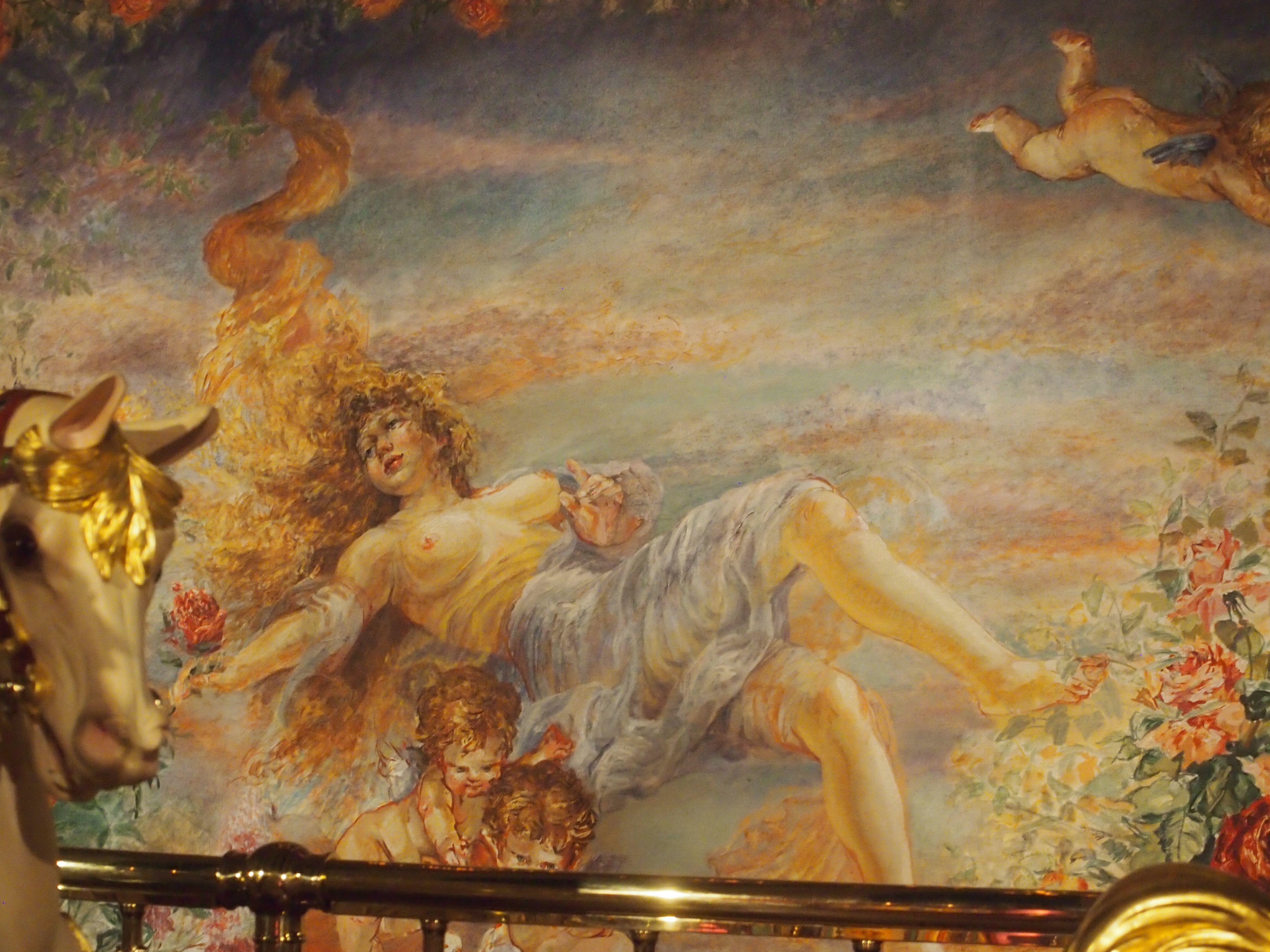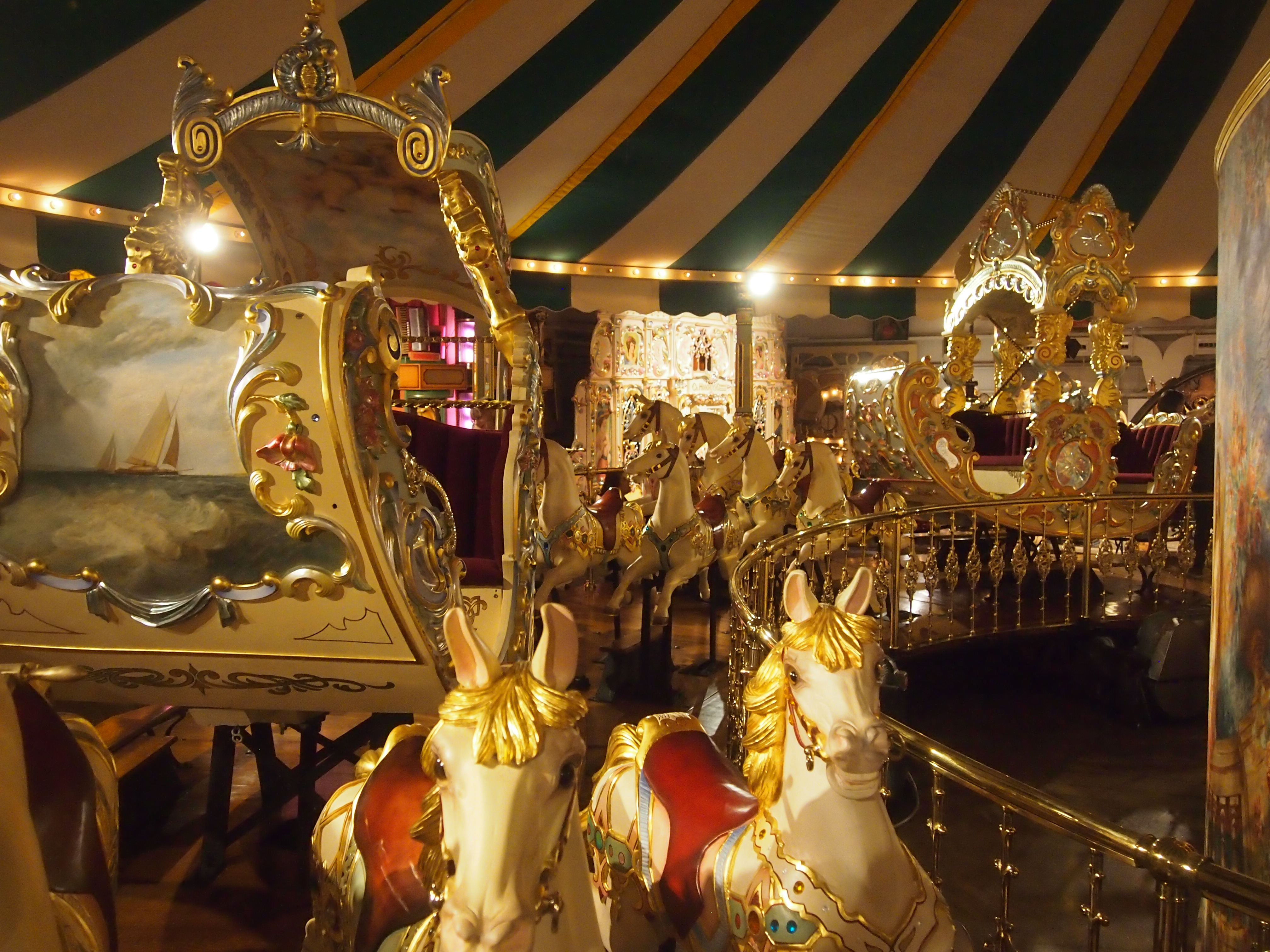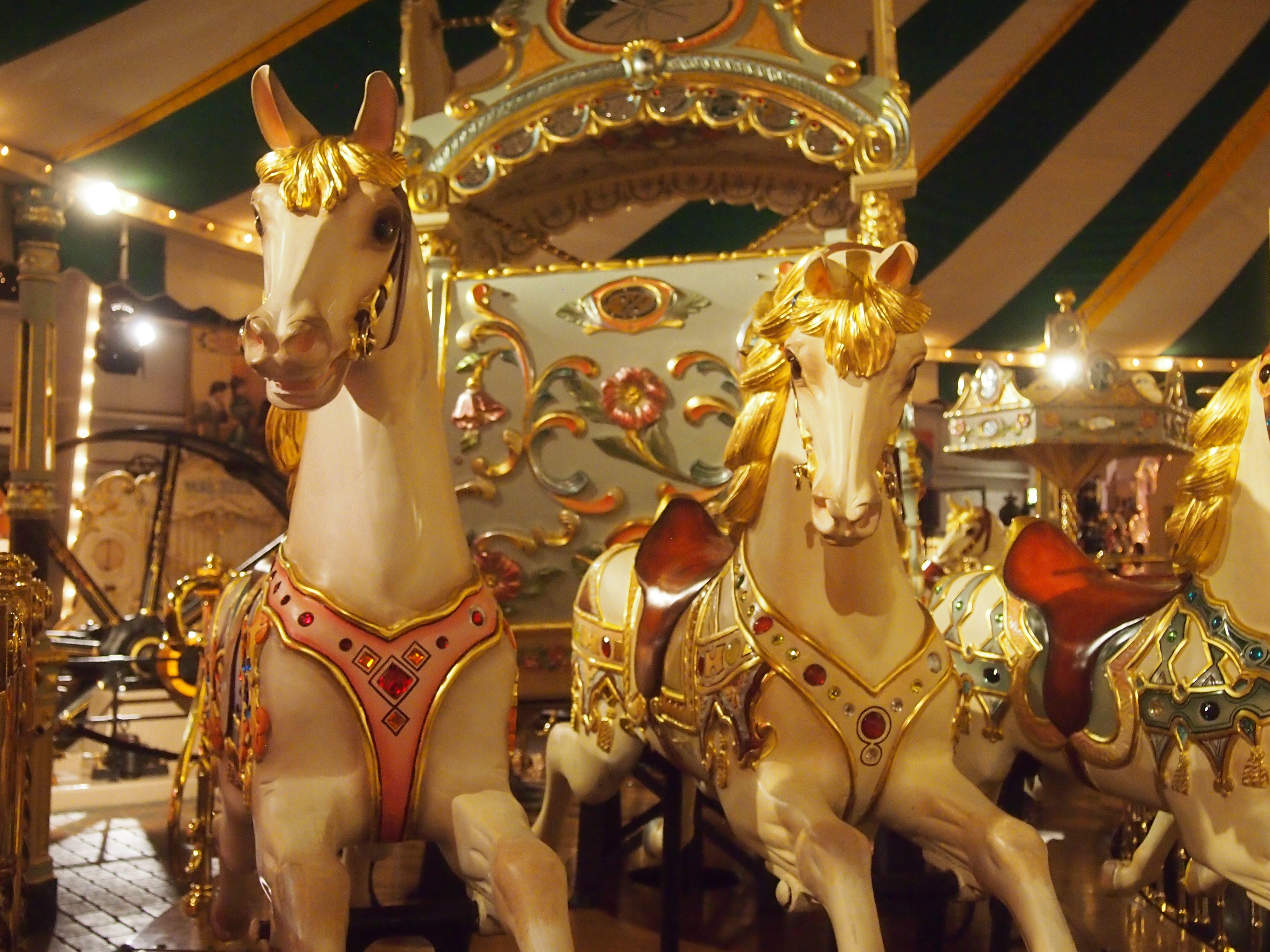In an outbuilding of the mansion we toured last month — a large outbuilding — is the Eden Palais.
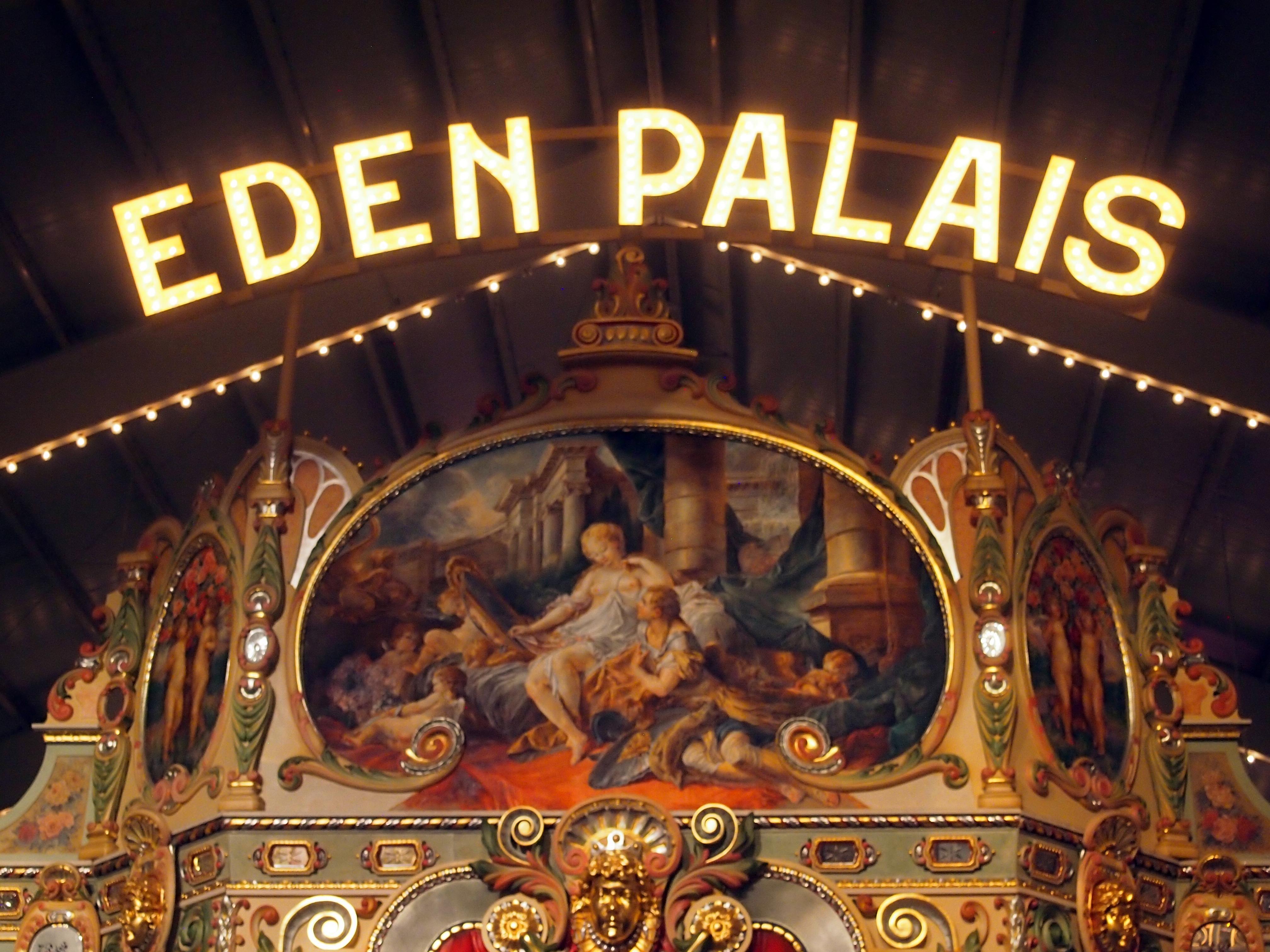 I quote at some length as I go along, from the mansion’s web site: “The carousel building, completed in 1997, is the home of the most complete example of a European salon carousel in existence — the Eden Palais, built in 1890.
I quote at some length as I go along, from the mansion’s web site: “The carousel building, completed in 1997, is the home of the most complete example of a European salon carousel in existence — the Eden Palais, built in 1890.
“The salon carousel was more than just an amusement ride, it was a self-contained entertainment palace that included stages for live performers, several bars, booths for perimeter seating, and music. The whole affair was lighted by hundreds of light bulbs, and was undoubtedly one of the first places that patrons experienced electric lighting when it was new.
“The Eden Palais includes an 89′ wide by 42′ tall carved facade with life-size carved horses, giant art glass butterflies, a painting recreating an original that hangs in the Louvre, and a beautiful etched-glass entryway.”
It’s impressive for sure. This is the front entrance.
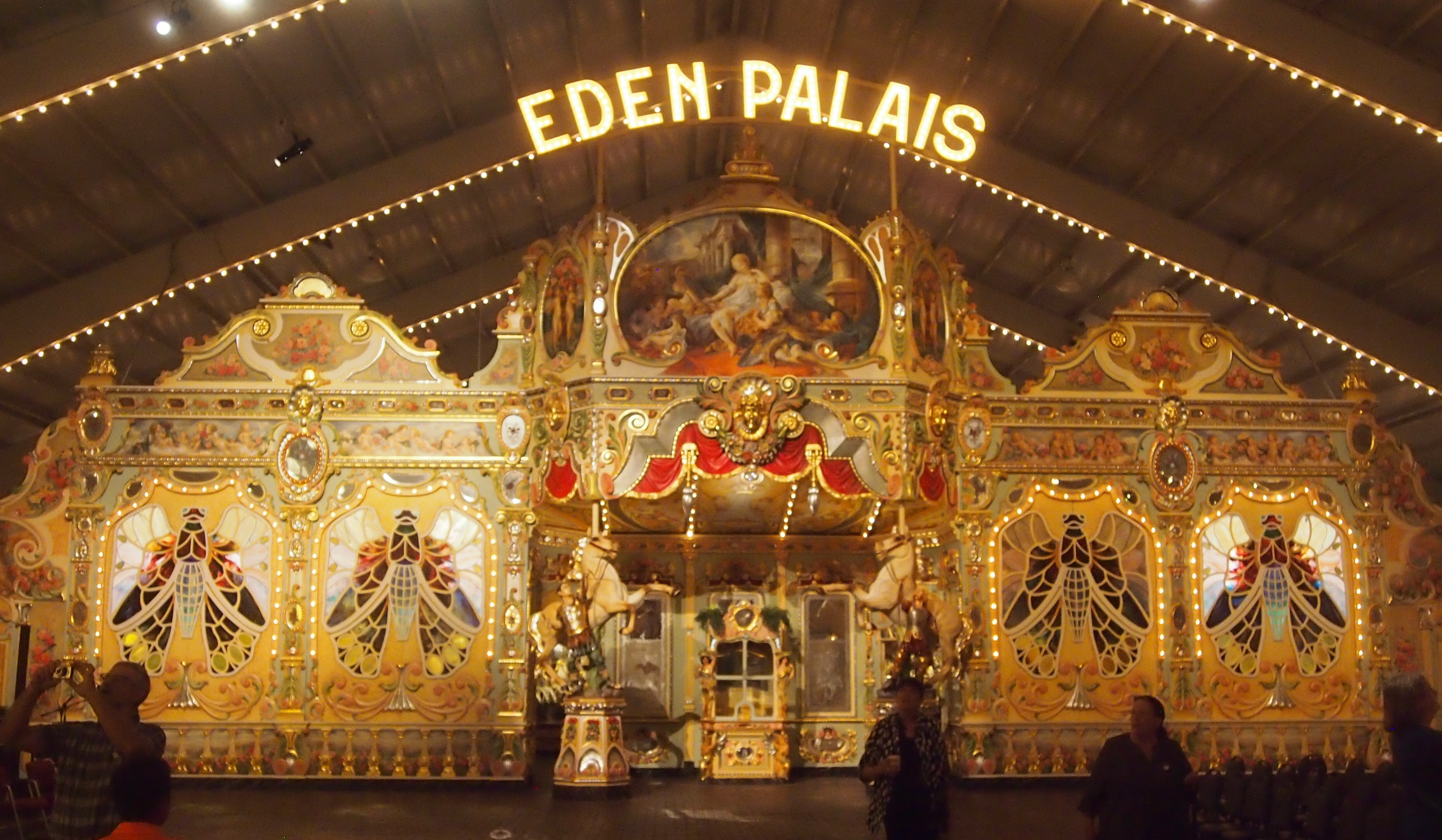 Apparently three more walls of similar heft originally surrounded the carousel, defining the entertainment palace. They’re in storage now. All of them were moved with the carousel from place to place around France, just like a circus might.
Apparently three more walls of similar heft originally surrounded the carousel, defining the entertainment palace. They’re in storage now. All of them were moved with the carousel from place to place around France, just like a circus might.
One of the figures next to the entrance.
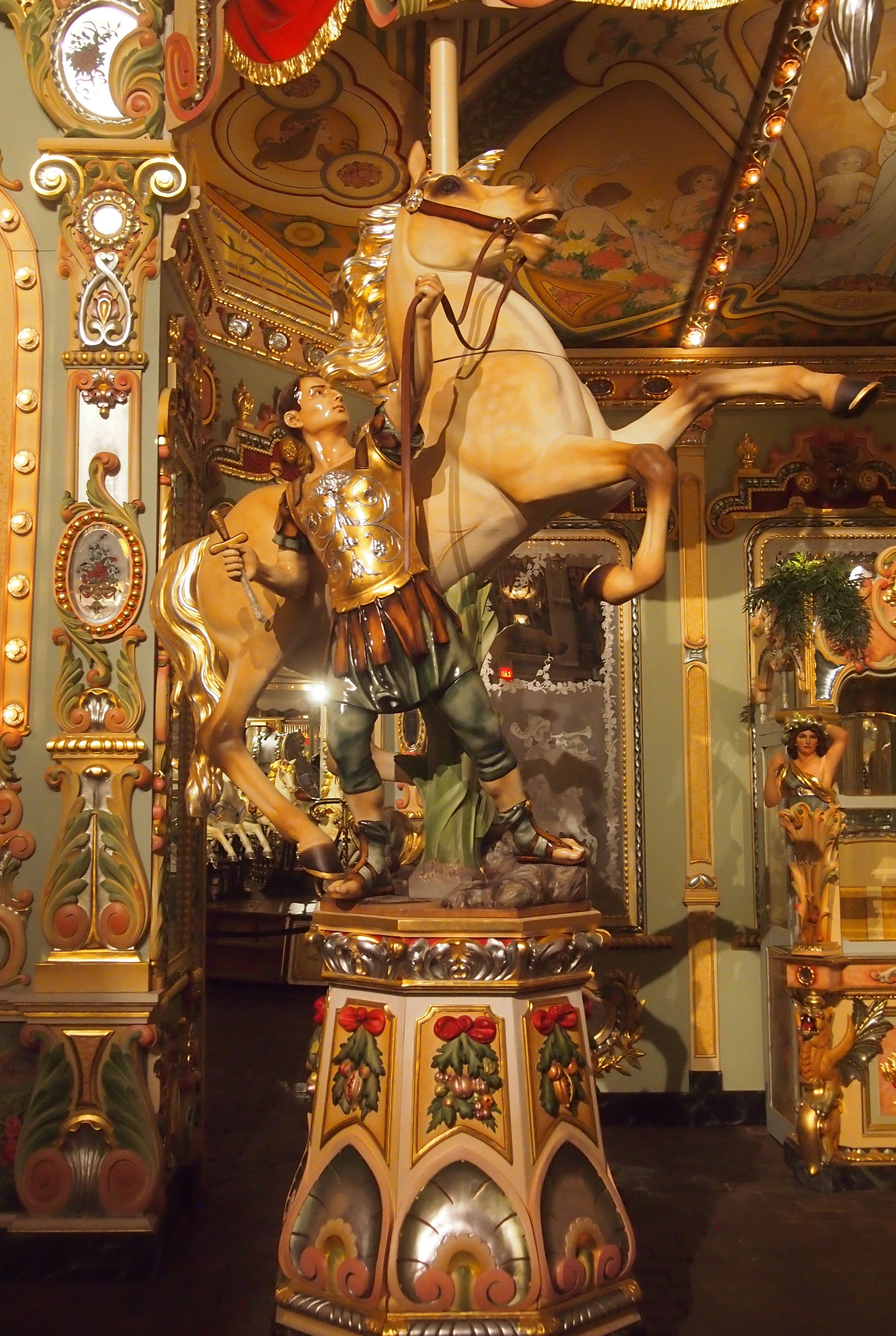 This is the carousel, behind the main entrance wall. It’s one of the larger ones I’ve seen, and unlike the one at the House on the Rock, a true carousel that you can ride. Which we did. It was clearly built during less safety-paranoid times. But no one was injured. The ride was a gas.
This is the carousel, behind the main entrance wall. It’s one of the larger ones I’ve seen, and unlike the one at the House on the Rock, a true carousel that you can ride. Which we did. It was clearly built during less safety-paranoid times. But no one was injured. The ride was a gas.
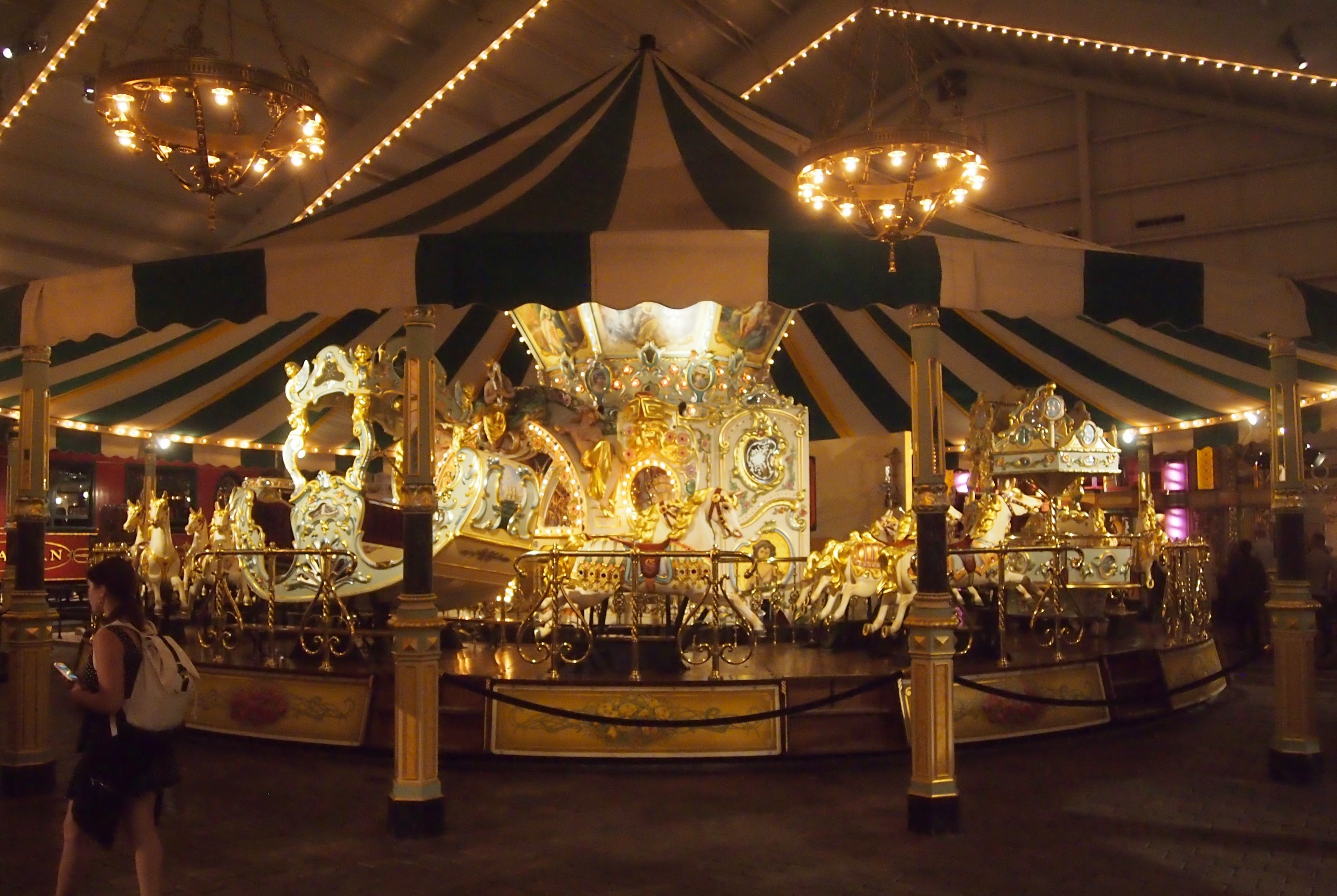 “The carousel itself is 46 feet in diameter, with 36 hand-carved Hubner horses, four ornate rocking gondolas and a spinning lovers’ tub. The center is adorned with seven large Coppier paintings. The platform runs on tracks; three steam engines originally drove the platform, the center hub of paintings and the band organ. The steam engines are restored, but power is now supplied by electric motors.”
“The carousel itself is 46 feet in diameter, with 36 hand-carved Hubner horses, four ornate rocking gondolas and a spinning lovers’ tub. The center is adorned with seven large Coppier paintings. The platform runs on tracks; three steam engines originally drove the platform, the center hub of paintings and the band organ. The steam engines are restored, but power is now supplied by electric motors.”
A detail of one of the center paintings. As was pointed out by our guide, something likely to appear in 1890s Europe, but not the United States.
Details of the carousel.
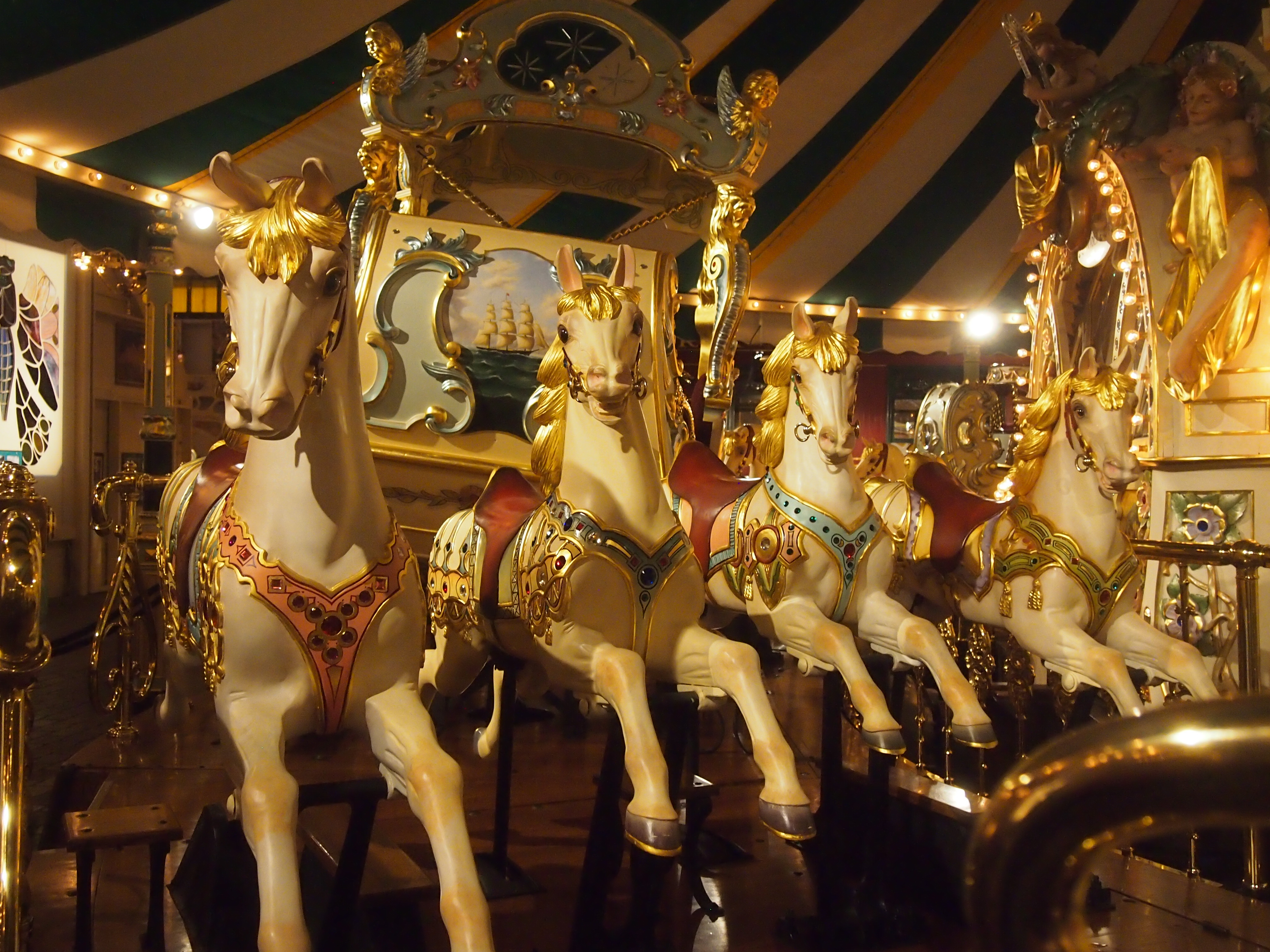 A nearby figure.
A nearby figure.
 “Several different owners toured France with the Eden Palais from 1890 through 1959. An amusement park in Golden, Colorado, imported it from the Caron family in 1959 and then went bankrupt, leaving it outside in the snow for one winter. Charles and Sue Bovey then purchased it and stored it in Great Falls, Montana, until the [current owner] acquired it in 1987.”
“Several different owners toured France with the Eden Palais from 1890 through 1959. An amusement park in Golden, Colorado, imported it from the Caron family in 1959 and then went bankrupt, leaving it outside in the snow for one winter. Charles and Sue Bovey then purchased it and stored it in Great Falls, Montana, until the [current owner] acquired it in 1987.”
Restoration took years and boatloads of money, the guide said, though not quite in those words.
“Large steam engines surround the carousel, including an 1826 table engine, an 1836 walking beam engine, and an 1880 double compound 80 horsepower marine engine. The 1881 Grant railroad locomotive and tender were used by Henry Ford for forty years in his Dearborn, Michigan, auto plant and later displayed in the Ford Museum at Greenfield Village.”
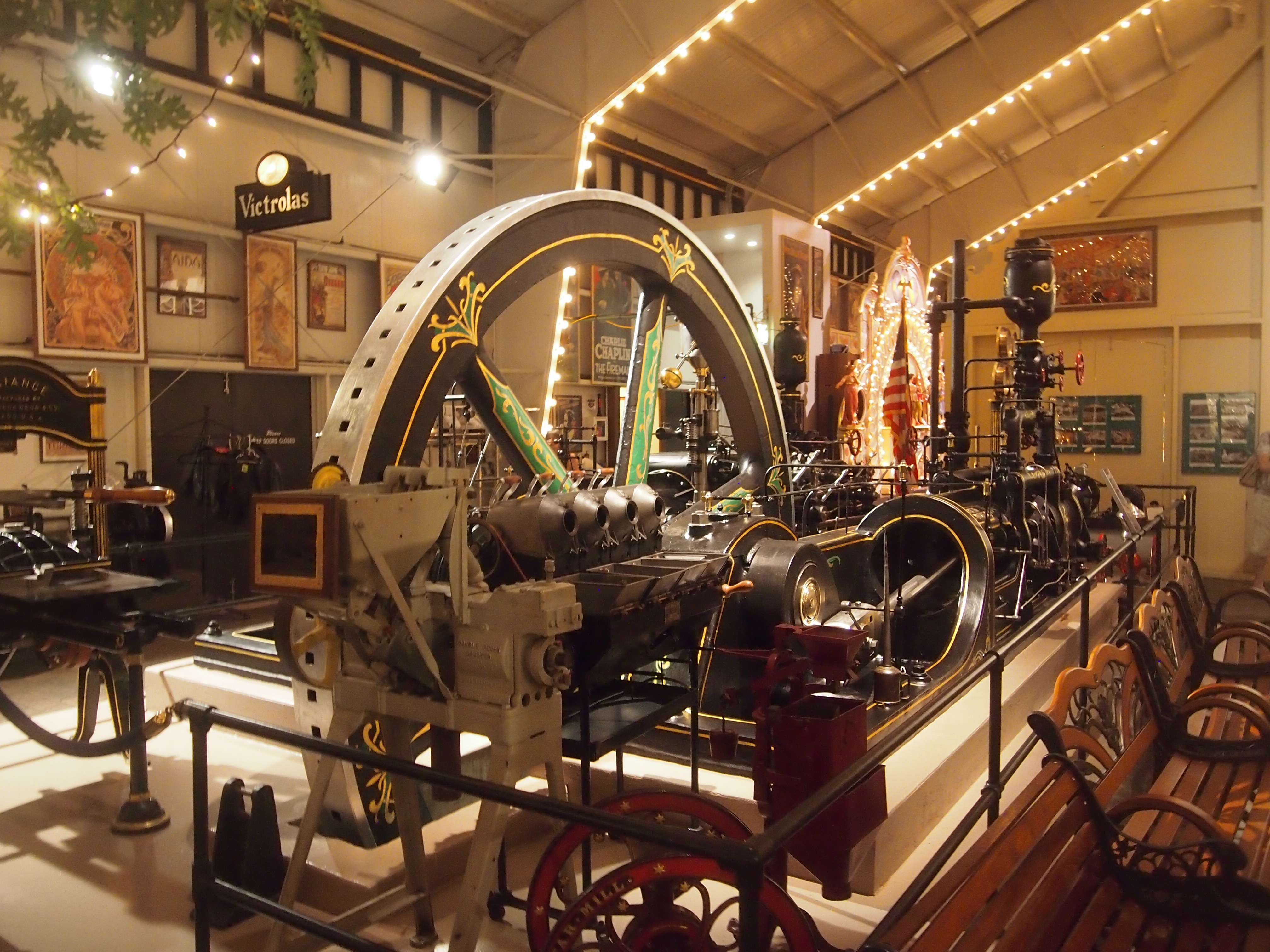 But that’s not all. Near the carousel wall was a tower.
But that’s not all. Near the carousel wall was a tower.
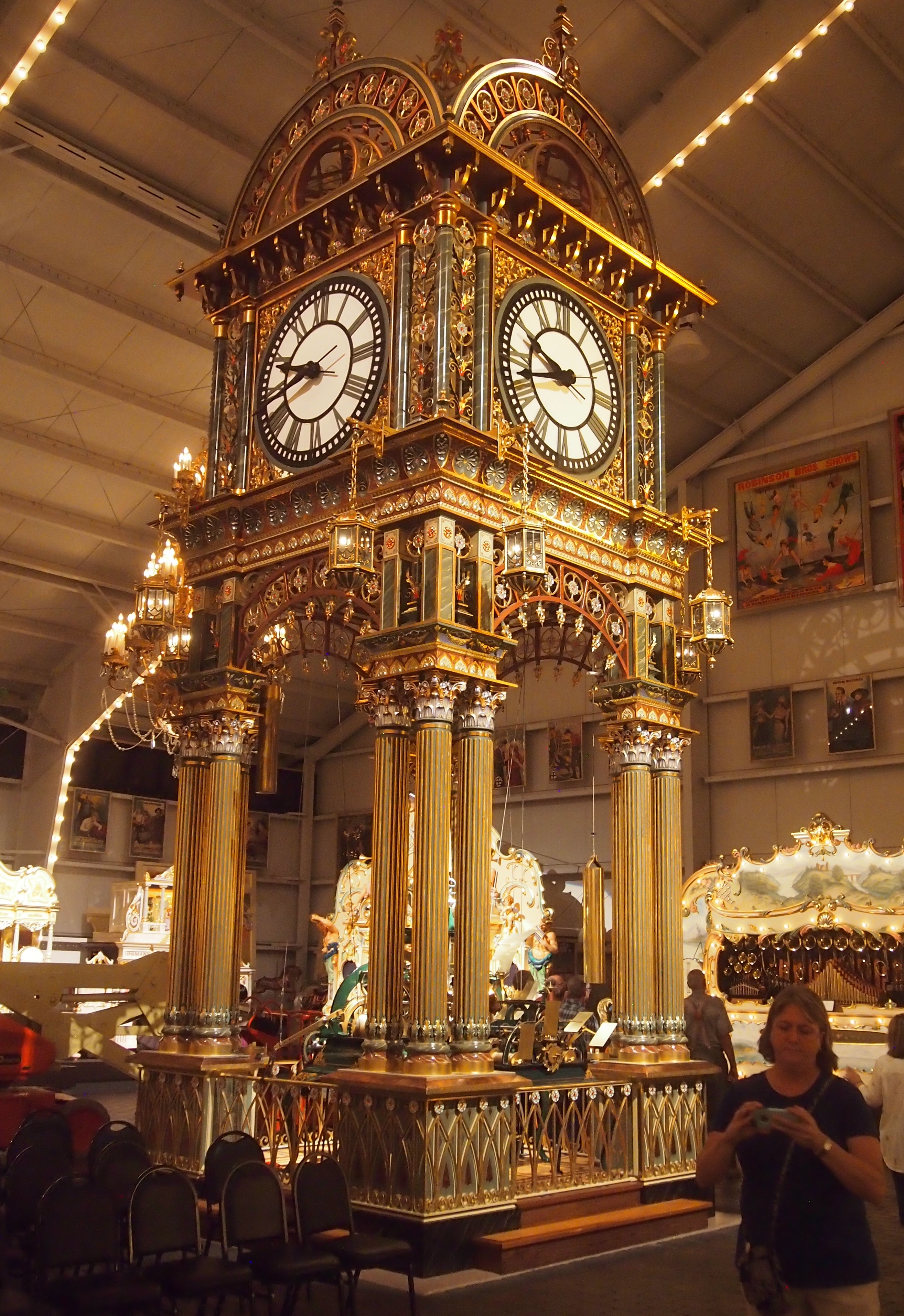 “The spectacular Joseph Mayer cast iron street clock stands over 20 feet tall, weighs over 8,000 pounds and originally was owned by the American Jewelry Co. of Bakersfield, California. It includes a Dennison gravity escapement, a self-winder, and a mercury-compensated pendulum, features rarely found in street clocks.”
“The spectacular Joseph Mayer cast iron street clock stands over 20 feet tall, weighs over 8,000 pounds and originally was owned by the American Jewelry Co. of Bakersfield, California. It includes a Dennison gravity escapement, a self-winder, and a mercury-compensated pendulum, features rarely found in street clocks.”
Also: “American and European fairground and dance hall organs displayed in the carousel building include examples by Bruder, DeCap, Gavioli, Hooghuys, Limonaire, North Tonawanda and Ruth. Wurlitzers include a 157, 165 and 180, among others.”
This Gavioli was not likely to originally be found in North America either.
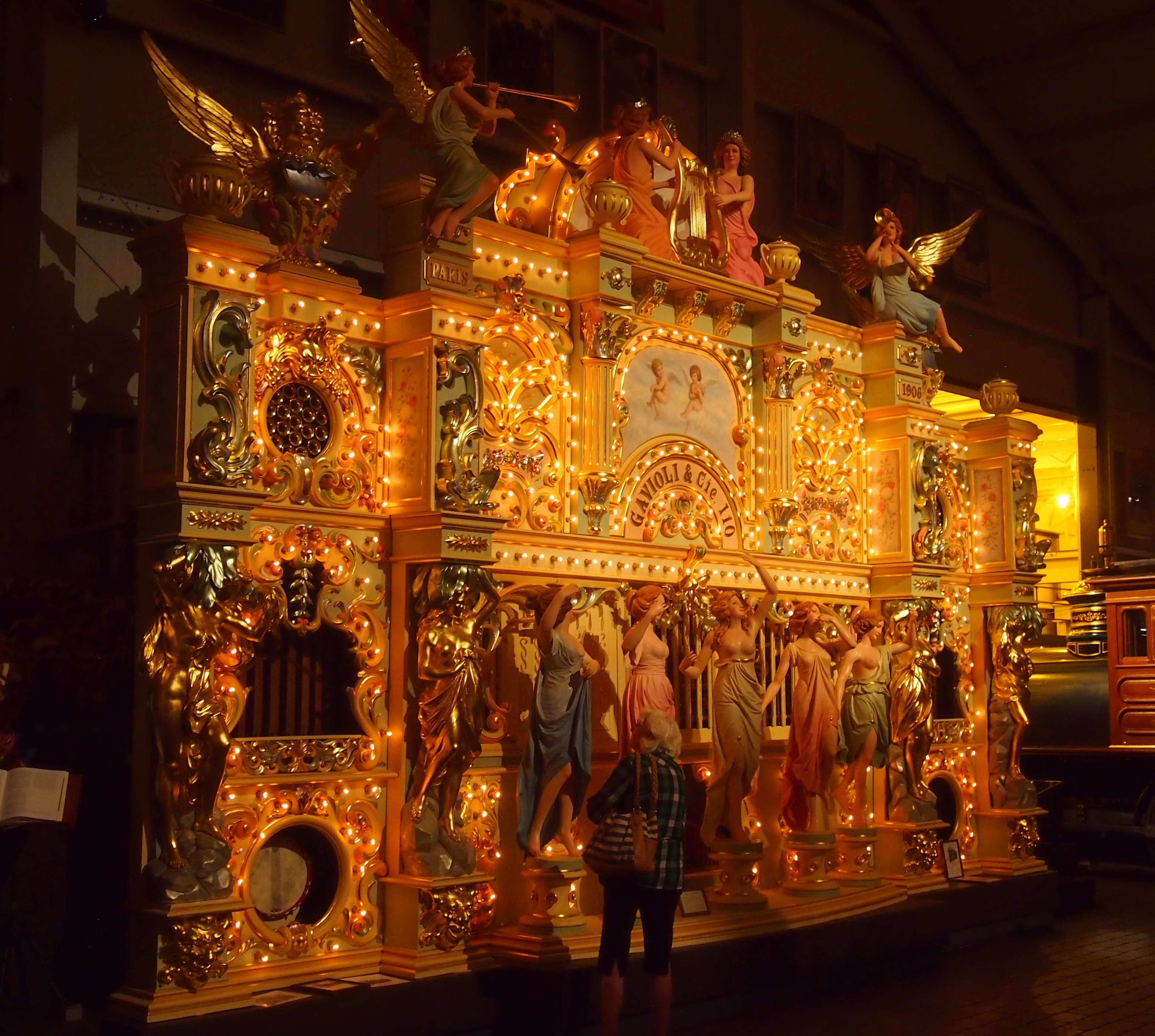
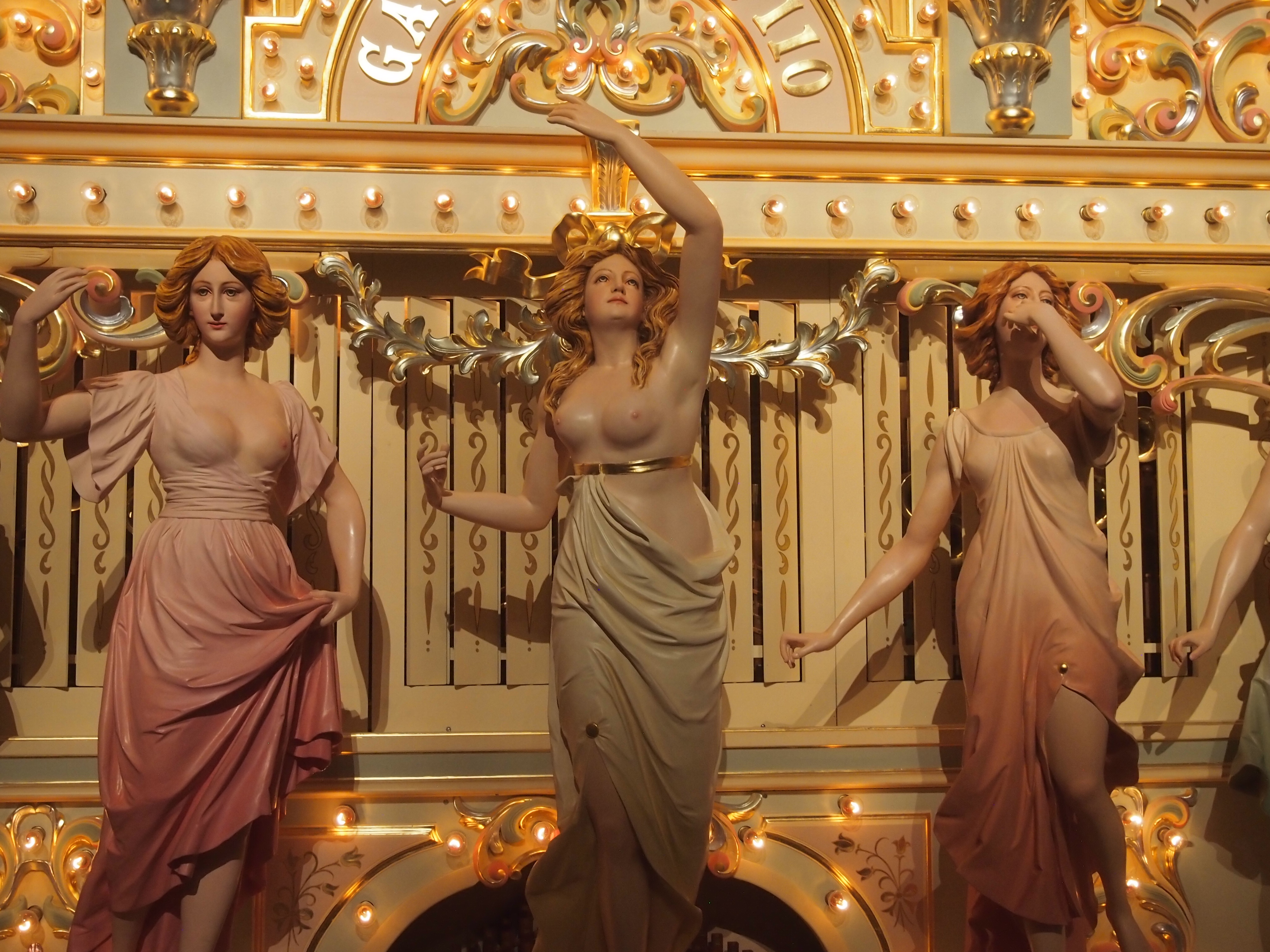 Here’s a Belgian street organ.
Here’s a Belgian street organ.
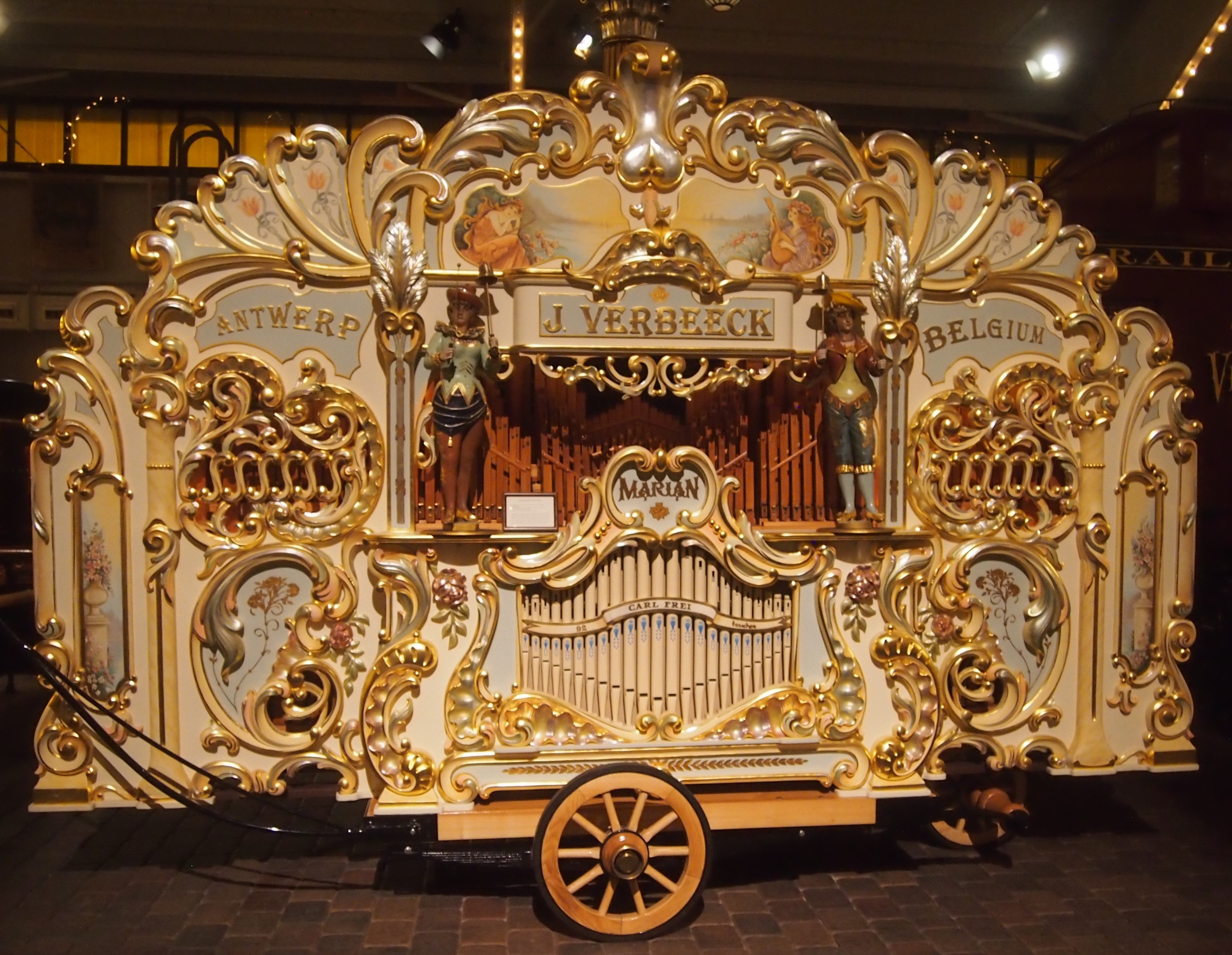 Not an old one. Apparently the Belgians have decided that older such machines are part of their national patrimony, so they cannot leave the country legally. No worries, though, since if you’ve got the dosh, you can have a new one built.
Not an old one. Apparently the Belgians have decided that older such machines are part of their national patrimony, so they cannot leave the country legally. No worries, though, since if you’ve got the dosh, you can have a new one built.
